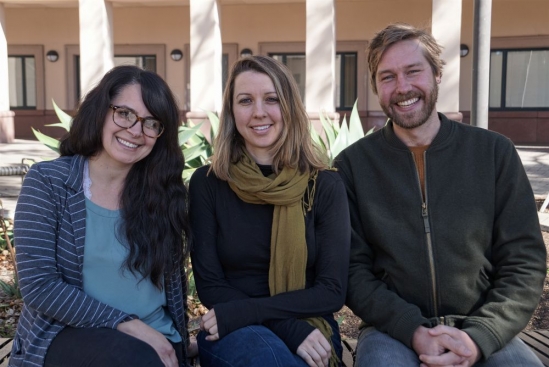Watching the Detectives: A Look at Academic Equity
Anthropologists Study Race and Gender Among Archaeologists

In 2016, Professor Amber VanDerwarker decided to use her skills to examine the culture of her own discipline. The UC Santa Barbara cultural anthropologist had noticed a curious trend: More women than men entered archaeology as grad students, but women largely went into the management of cultural resources, such as art and historical artifacts, while men joined academia. Looking at the Society for California Archaeology, the difference by race was even greater.
VanDerwarker launched the Gender Equity Project to dig a little deeper with the help of graduate students Kaitlin Brown, Toni Gonzalez, Hugh Radde, and Dana Bardolph (who is now at Cornell). They conducted surveys within the Society for California Archaeology (SCA) and published their results in five papers, four in the SCA’s journal California Archaeology.
The researchers found a major gender disparity: Though women make up about 61 percent of archaeology grad students across the nation, the majority of “tenure-track academic positions” went to men. Not only that, but within the parent discipline of anthropology, archaeology is the only field where more men consistently apply to be published in academic journals than women, though increasing numbers of women present papers at conferences and join professional organizations.
Additionally, they found that inequity issues in the discipline go beyond gender. Mentorship plays a key role in upward mobility in academia. Since there are fewer mentors who represent minority groups, it is more difficult for people of color to move up in the archaeological community. As in other academic disciplines, gender equity in archaeology is affected by sexual harassment — in the field, the classroom, and the workplace. In particular, the report found that “people of color experience the highest frequency of physical harassment among practicing professional archaeologists.” In a field that detects the past through artifacts, diversity is vital (archaeologists didn’t start studying ancient females until there were female archaeologists); the highlighted issues are a personal, professional, and scholarly problem.
“As a woman of color in the field of archaeology,” graduate student Toni Gonzalez told UCSB’s The Current, “I have personally experienced and witnessed subtle forms of gender inequity and harassment — at times, from individuals who did not consciously know that what they were doing was wrong. For a long time, I too, was complacent with what was happening because I was conditioned to think of these subtle disparities as ‘the norm.’ But these behaviors shouldn’t be ‘the norm.’” Gonzalez’s paper “Perceptions Versus Reality: A Comparative Analysis of Gender Equity Trends Within Academia and CRM in California” was published at researchgate.net.
The crux of the study, according to VanDerwark and her colleagues, is that equity in a department isn’t as simple as a balanced gender ratio. Beyond equitable representation of marginalized community members, VanDerwark said, action needs to be taken to shift the predominant culture in the discipline. At this year’s Society for California Archaeology meeting, Brown and Radde saw some exciting changes. For the first time, childcare was provided at the event center. With seven in 10 moms in the labor force as of 2015, such necessities were required year-round and in job sectors beyond archaeology. According to Pew Research Center, in households with two full-time working parents, mothers had more responsibility for the children. Providing childcare is essential for female archaeologists with children to be able to participate.
Radde, Gonzalez, and Brown hope to translate their research into action in the coming years. They believe that even as grad students, they have the ability to make an impact on the department from the bottom up.



